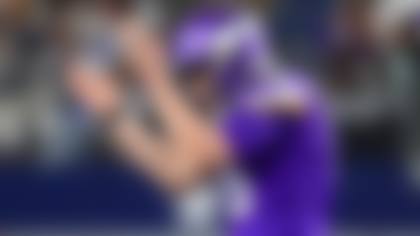Fred Gaudelli took a trip back in time recently, hardly a rarity in this day of "classic" this or "vintage" that. But in checking out a bit of history, he got a reminder of just how much the graphic presentation of football on TV has progressed.
In less than 15 years time, the entire look of televised football has changed. Thanks to the HD revolution and ever-improving techniques that bring information to the screen, it's almost as if the world is spinning faster than ever before. Networks can provide viewers with an unending flow of statistical data and game facts that seem limited only by the size of the screen. It began with the clock and score, "one of the three most significant innovations in the history of televised football," according to Gaudelli, and has grown to include down-and-distance readings, lineups, statistics, animation and a host of other graphic enhancements.
Since computer design and animation are advancing practically daily, the potential for new graphic concepts is almost boundless. But both Gaudelli and Jed Drake, executive producer of ESPN Productions, believe networks have to be careful with how much they choose to add. It's important to enhance the picture but vital not to clutter the screen.
"With the computer interfaces available, we could do a graphics presentation without even televising the game," Drake says. "There's enough information to be displayed, we could do it without the game.
"We have to be discriminating."
Gaudelli is right to say the continuous clock and score were groundbreaking graphic advancements. Networks are now focusing on how to provide that in the most unobtrusive way, especially now that HD technology has made game broadcasts so vivid. Thanks to a sharper, cleaner presentation, especially in high definition, that bar across the screen that once somewhat blocked action can be inserted with little visual interruption and come across clearer than ever.
That allows networks to concentrate on what else they want to provide. Down-and-distance on-field animation is 10 years old and gets more sophisticated each season. Together with the ubiquitous (and much appreciated) first-down line, it allows viewers to know exactly what teams must do on each play to stay on the move - in an increasingly creative way. Again, no one wants to be so creative folks don't pay attention to the pre-snap formation shifts and movements.
"We have to make sure always that any decision we make technically is not driving our decisions editorially," Drake says.
Perhaps it is the fantasy audience that is best served by the explosion of graphic technology. Networks can update stats in a real-time manner between plays and also provide updates on other games. "We want to service those people, but we don't want to overdue it," Gaudelli says. That's why you'll tend to see some key stats flashed on the screen periodically, but not an unending stream of clutter. If you want that, there are abundant computer sites to visit and cell-phone services available to provide updates. And what statistics matter? It's possible to show viewers how fast a quarterback throws a ball. That matters with pitchers on baseball broadcasts, but is it just showing off on the gridiron? "It's not significant," Gaudelli concludes.
We know what we see now; the big question is what's ahead. While neither Gaudelli nor Drake will commit to anything specific, both understand that technology's inexorable march will provide more opportunities for 3-dimensional graphic portrayals of what happens on the field. ESPN already does that when it stops action and rotates the view of a play, to show a better angle of what has happened. The NFL recently held a 3-D viewing of a game for some NFL owners and select guests at an Imax theater. As 3-D viewing becomes more real, accompanying graphic developments will also provide more opportunities to get viewers inside the game.
It may be hard to believe, but in 15 years, when Gaudelli watches a broadcast of a 2008 meeting between Dallas and the Giants, he'll be amazed at how rudimentary the graphics component is, by comparison. He hopes what he sees will stay in the spirit of providing viewers with important data while not overshadowing the action.
"How much information is too much?" he asks. "How much might be distracting? Function has to remain supreme. There is always a battle. Am I doing this because I can do it or does it help the viewer?"



